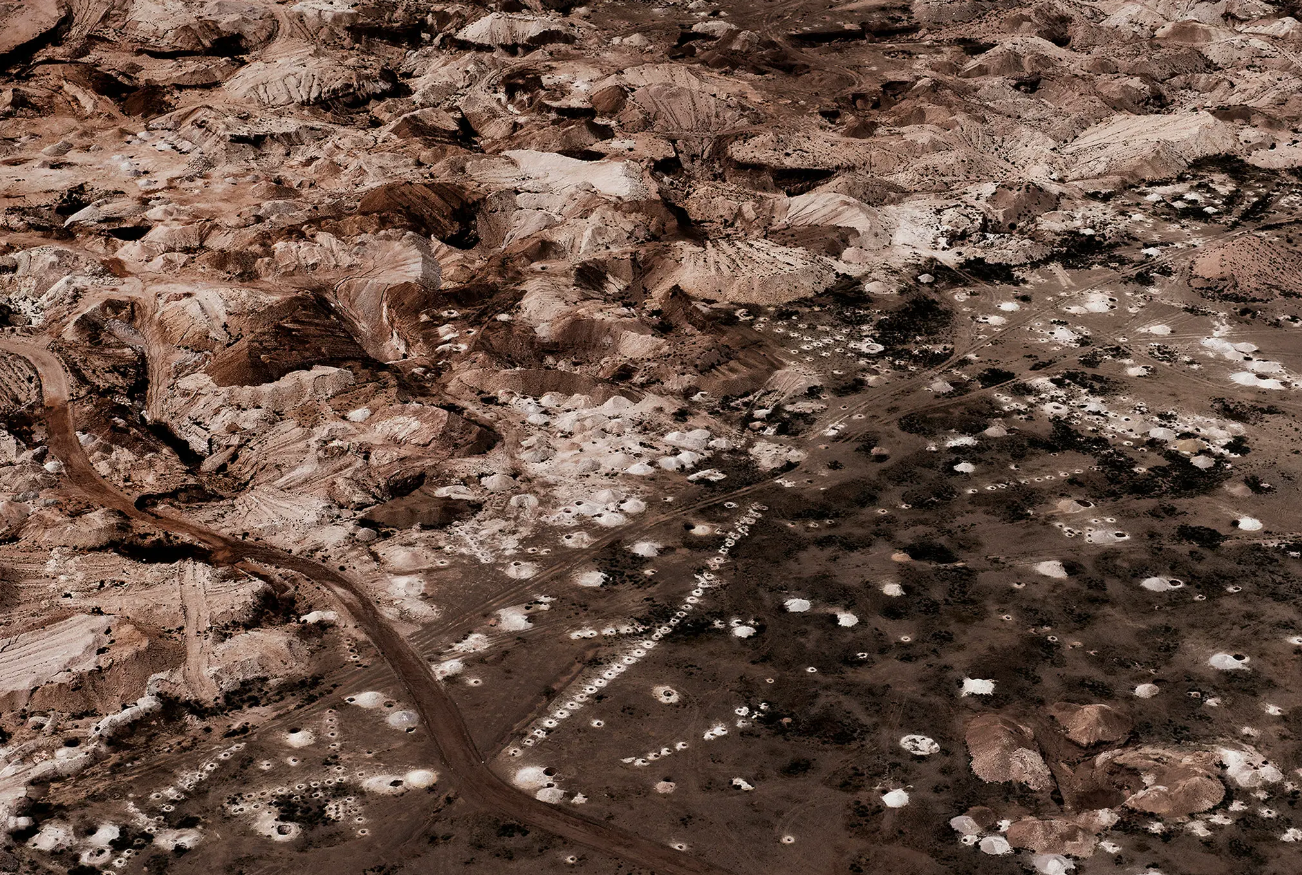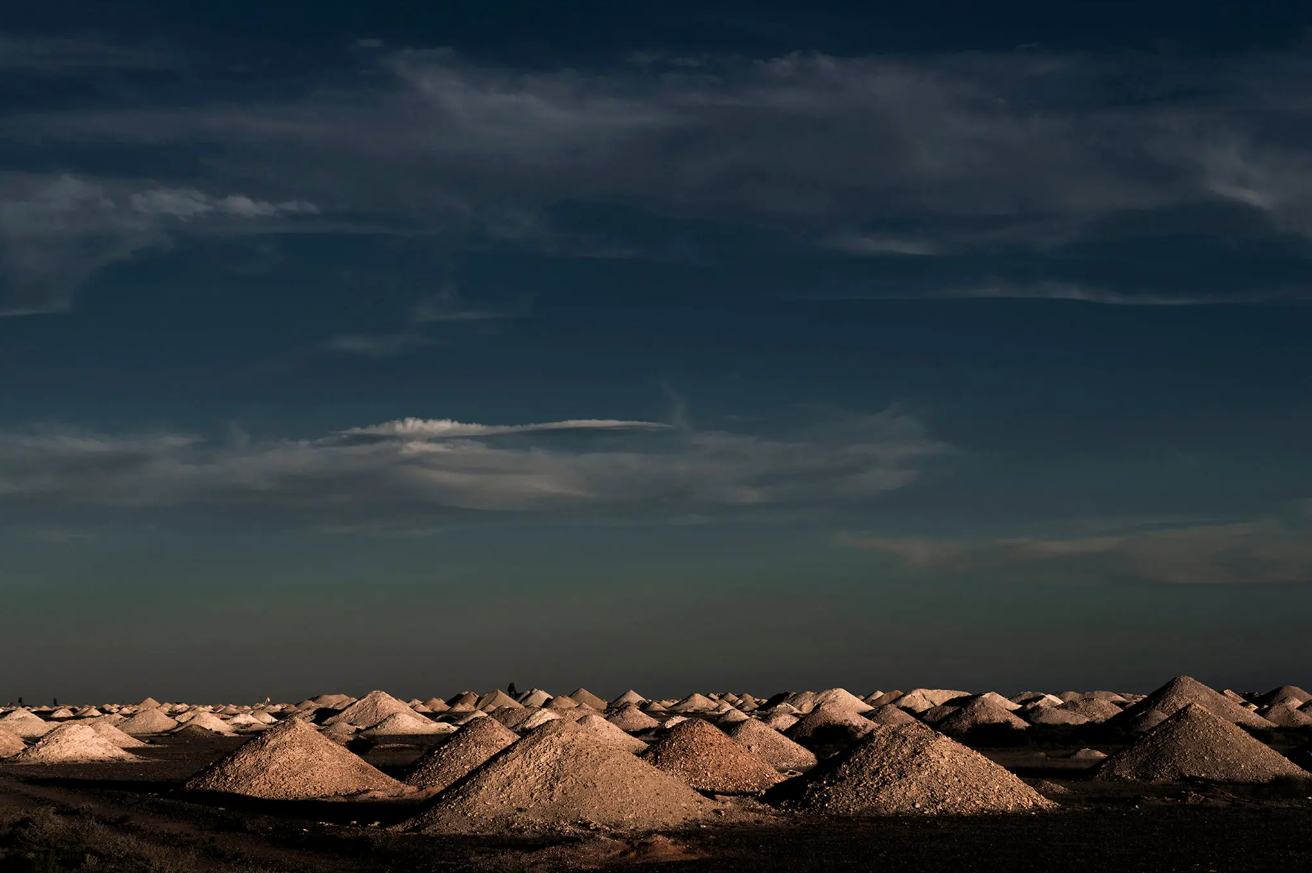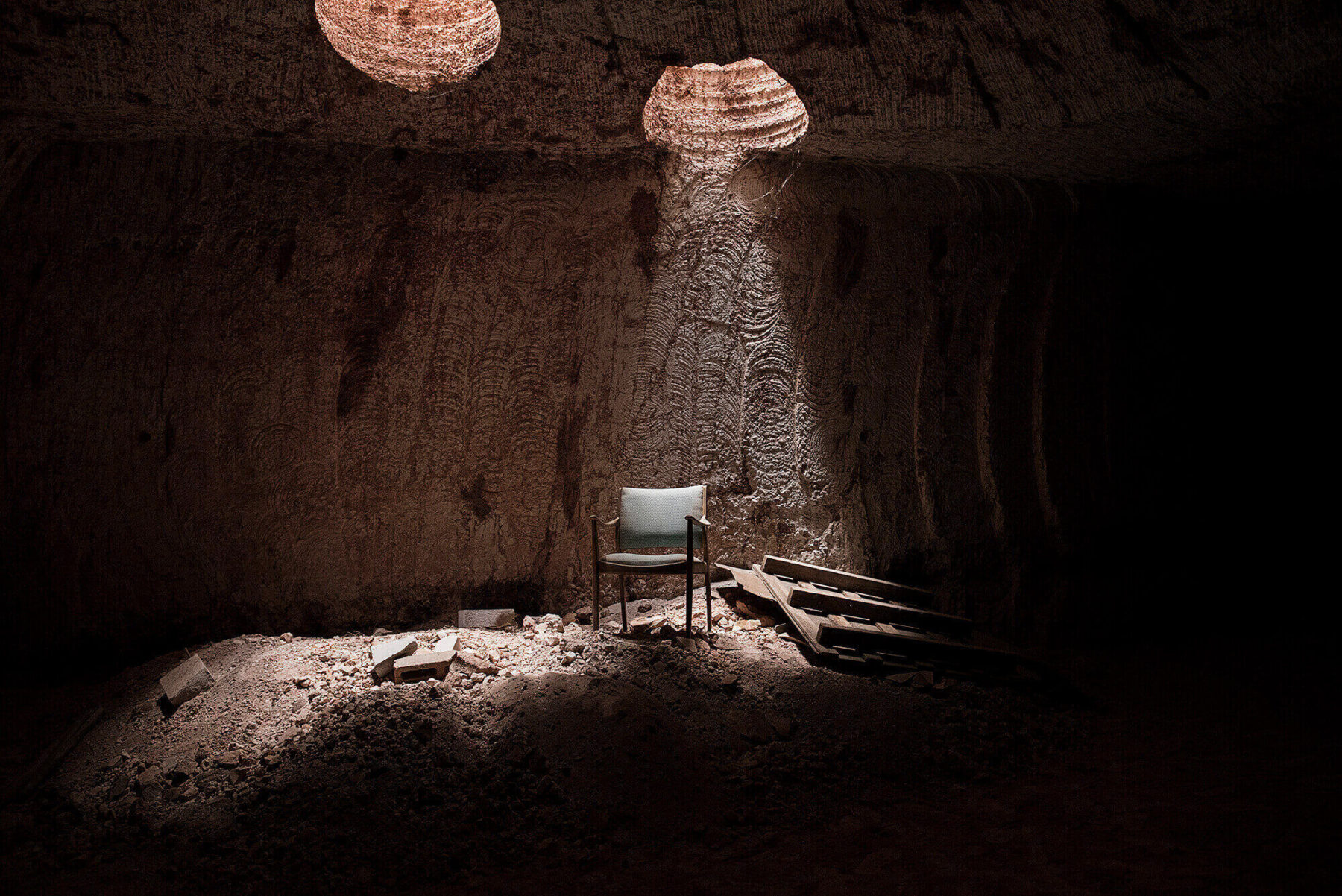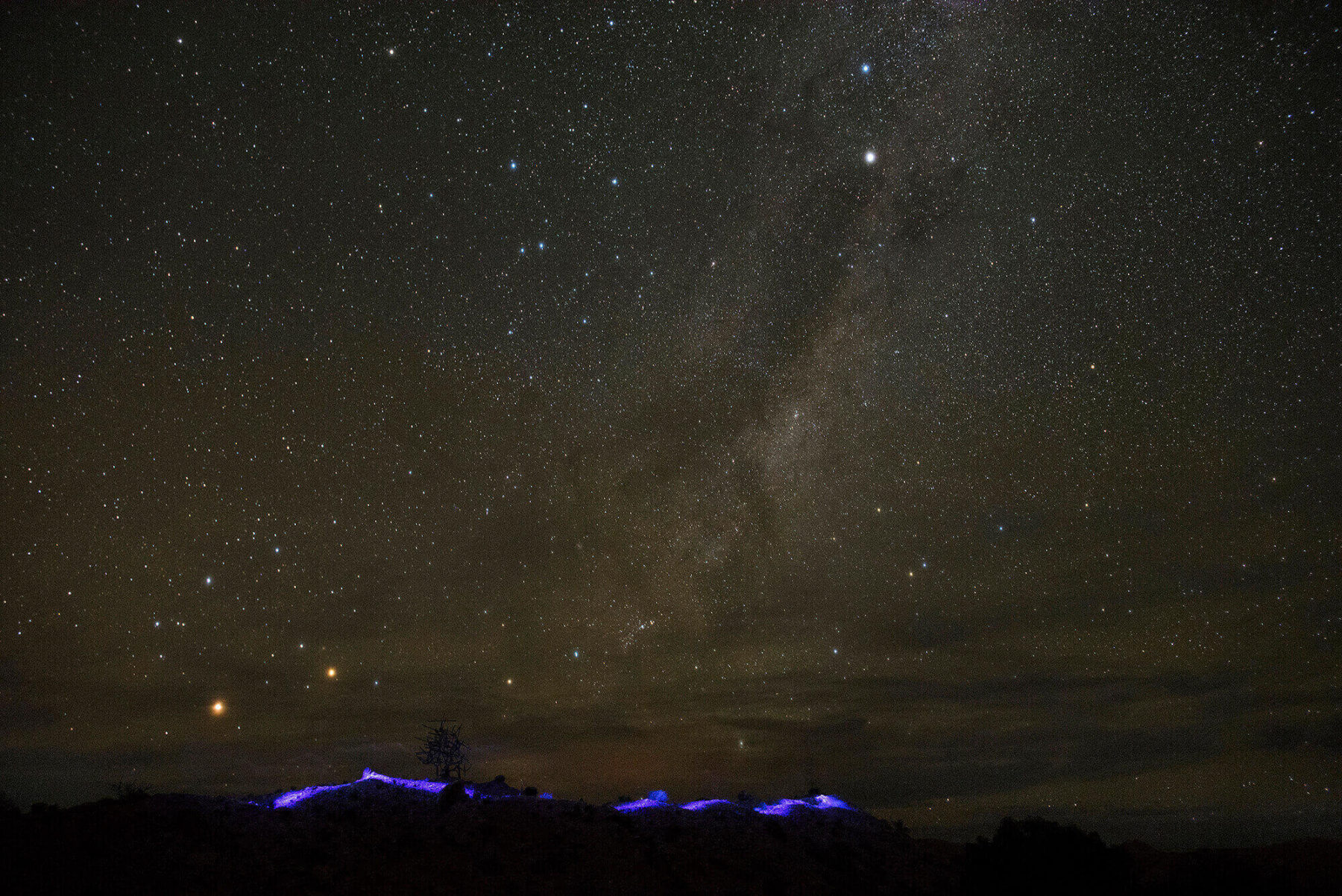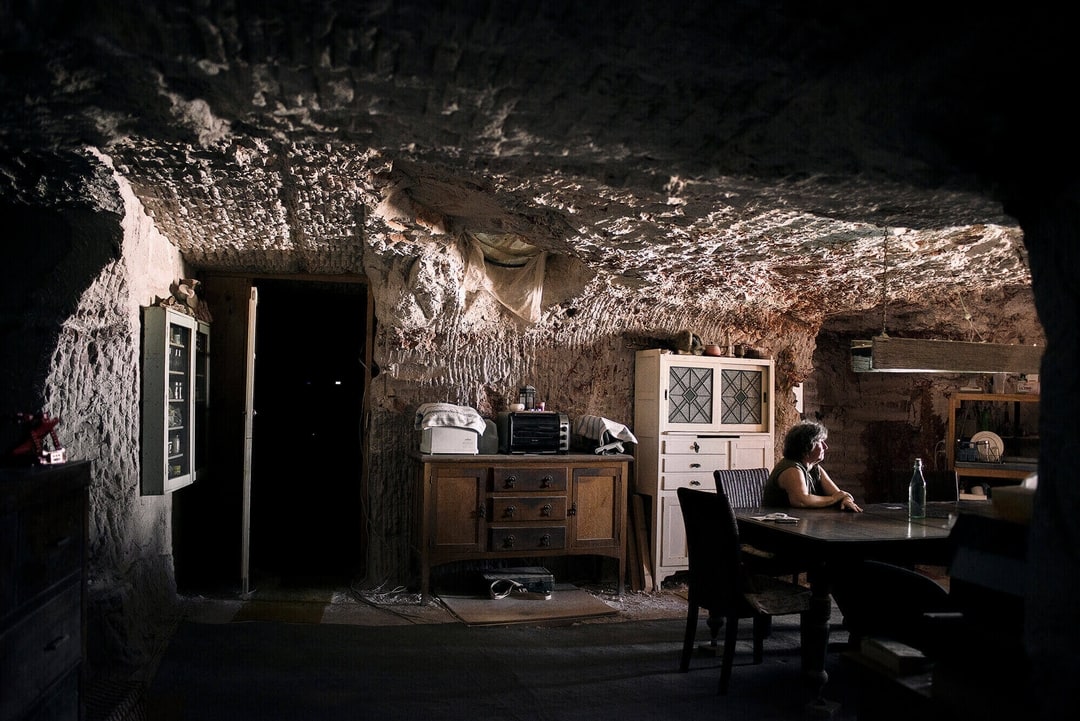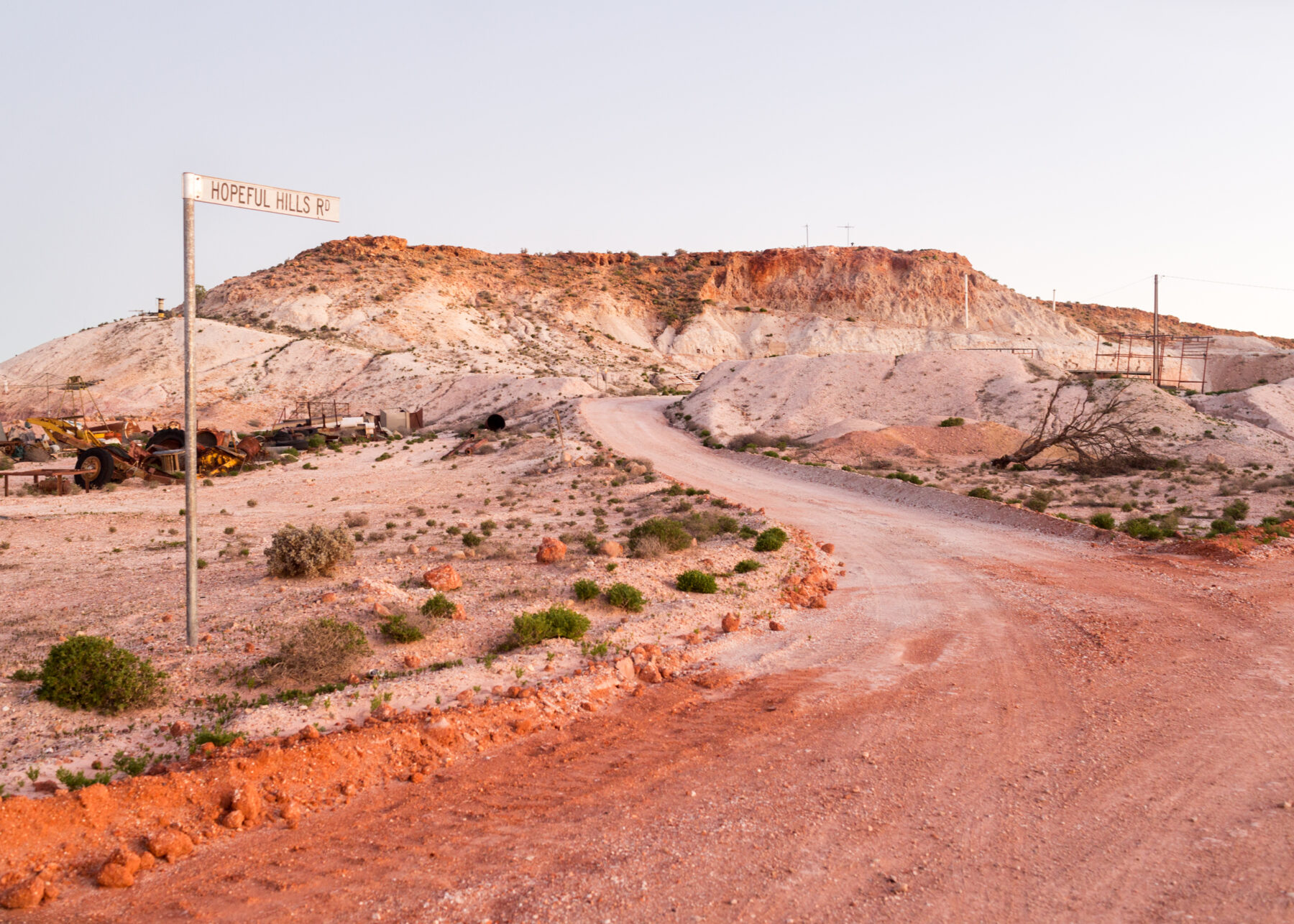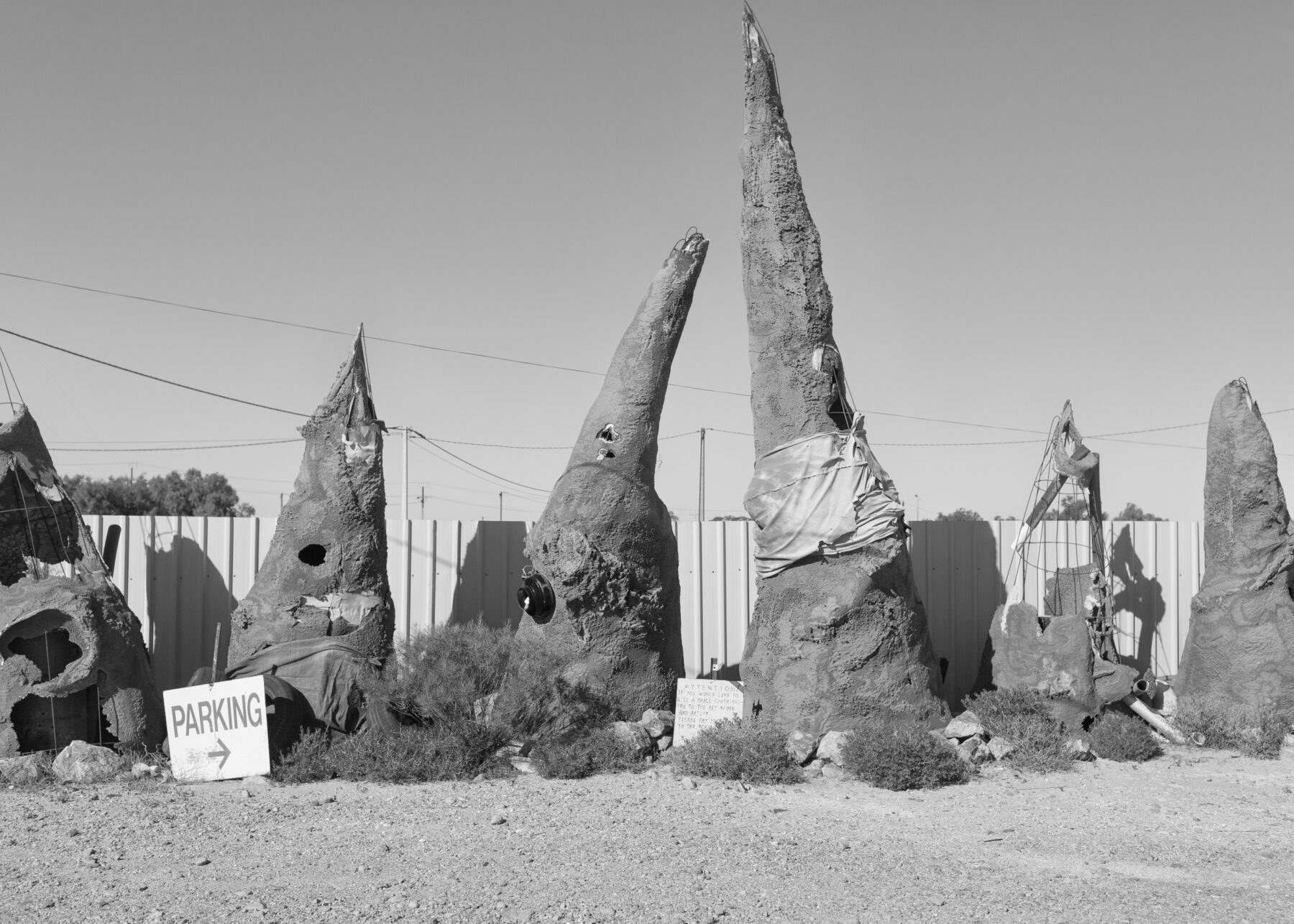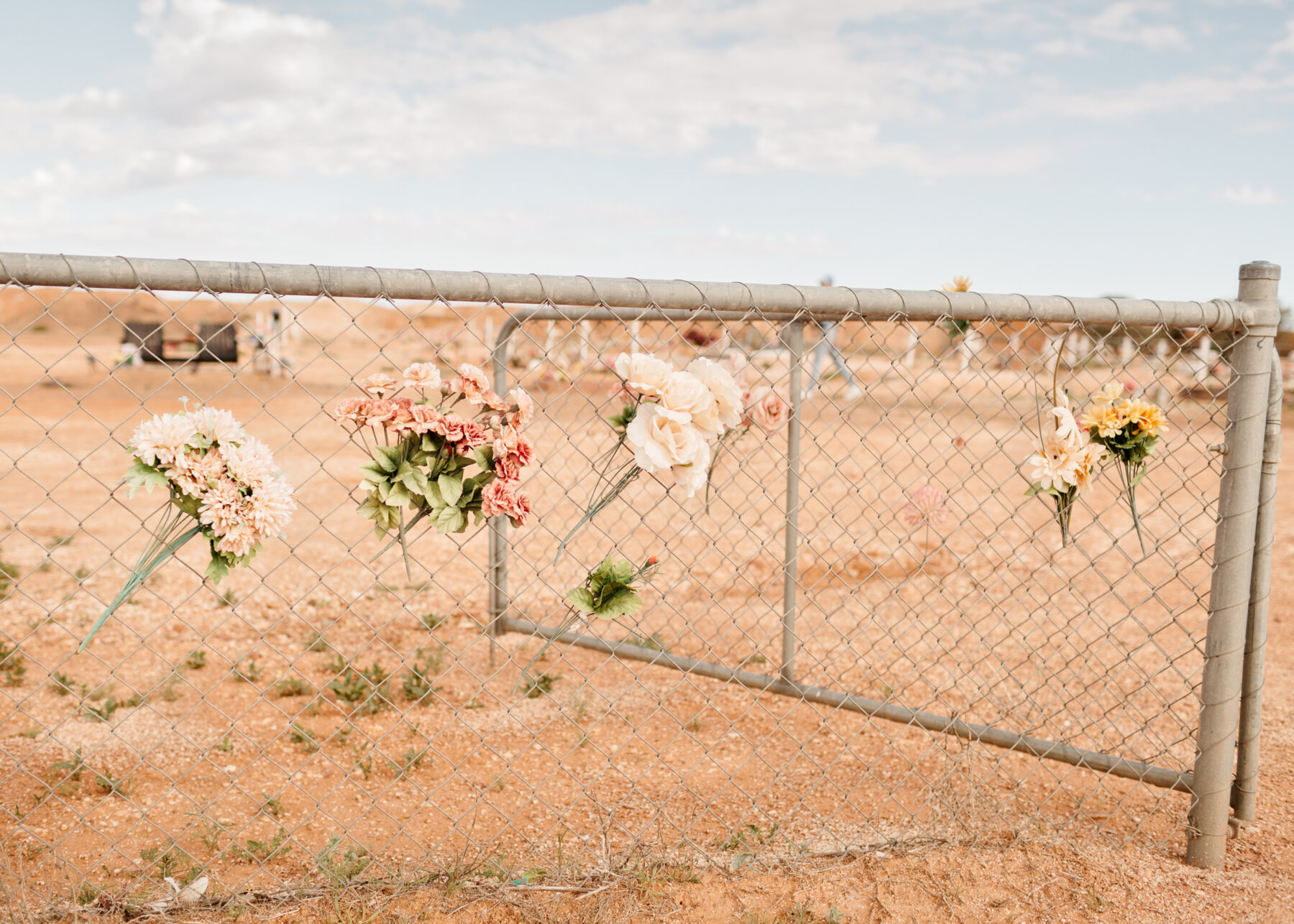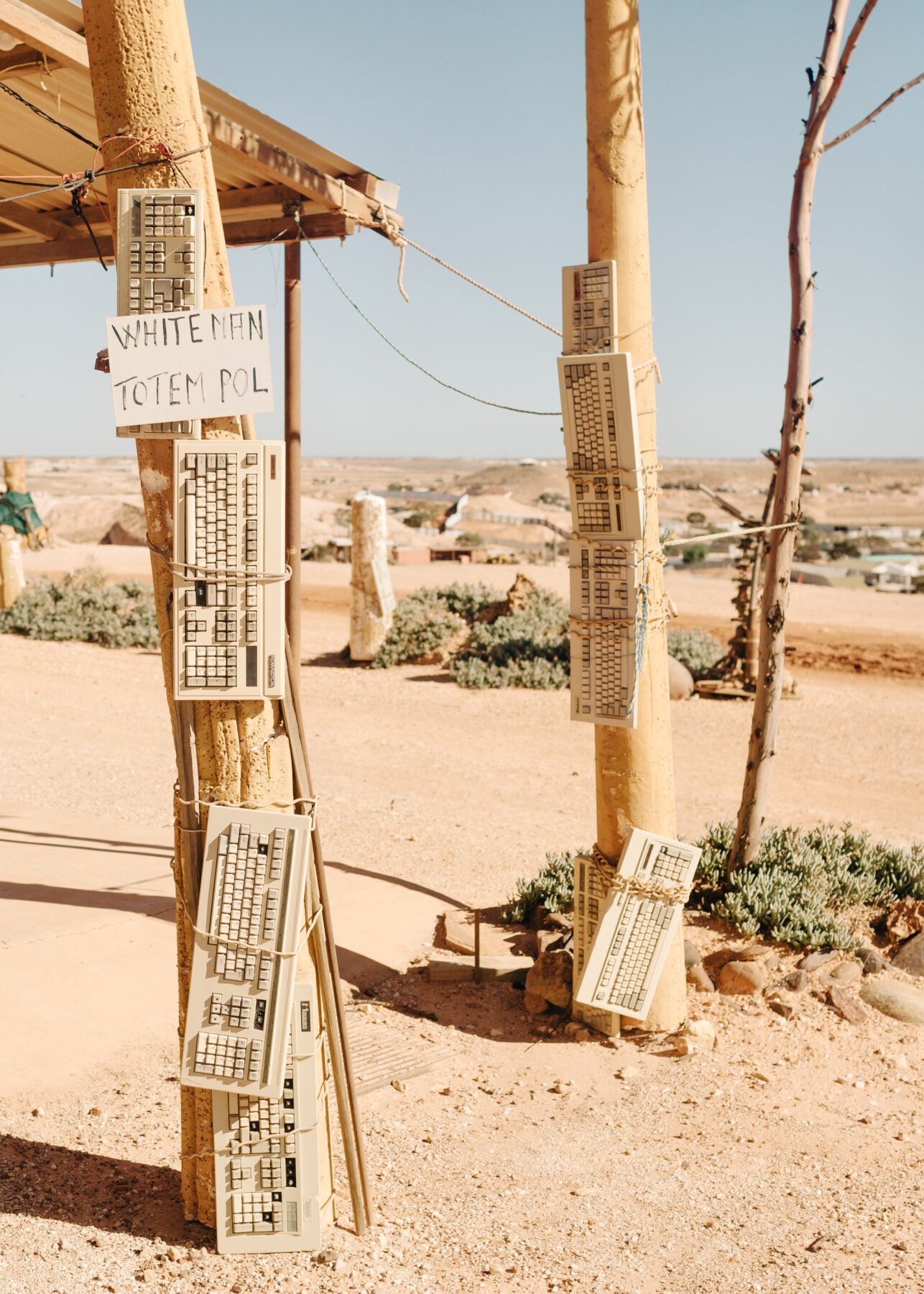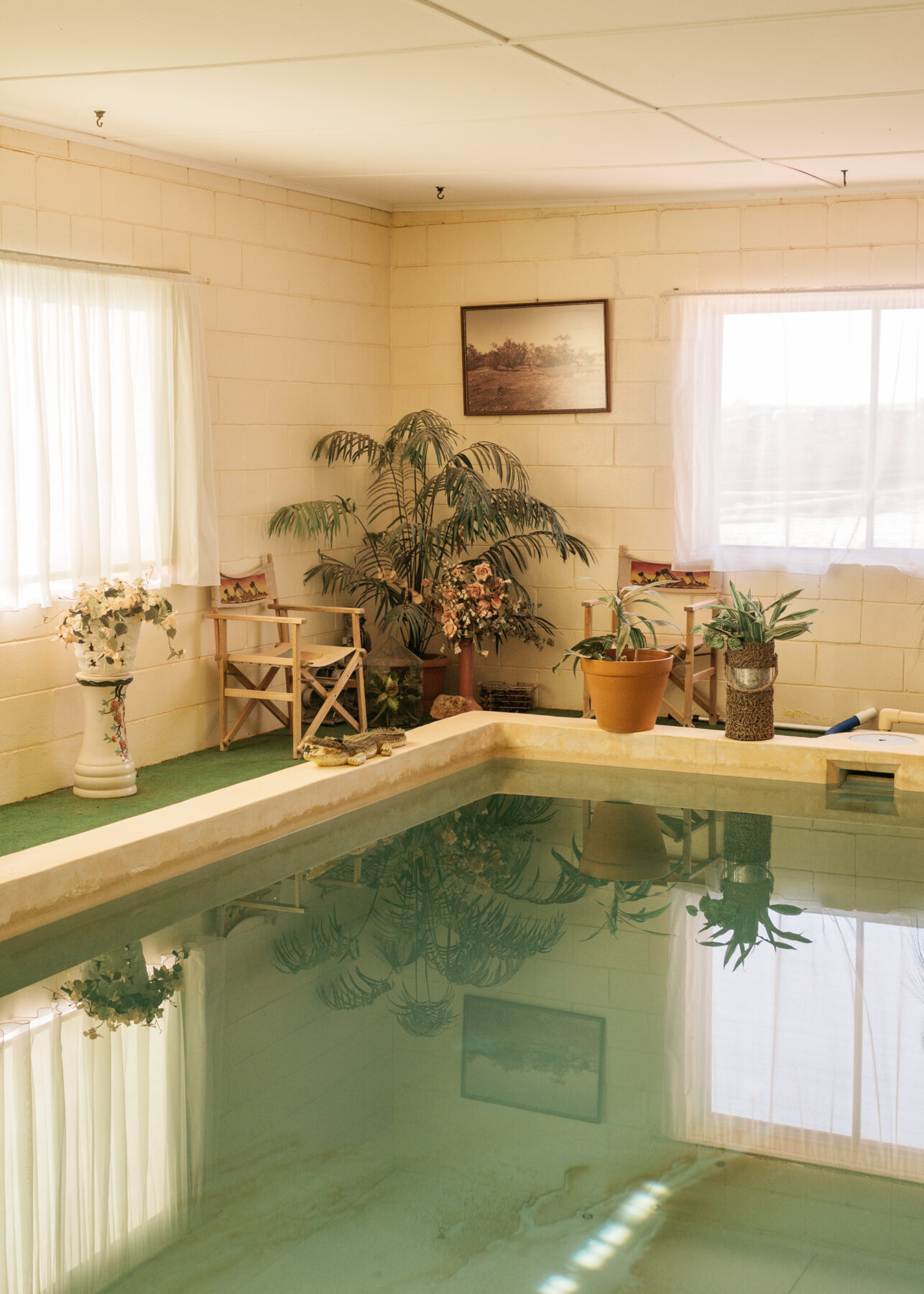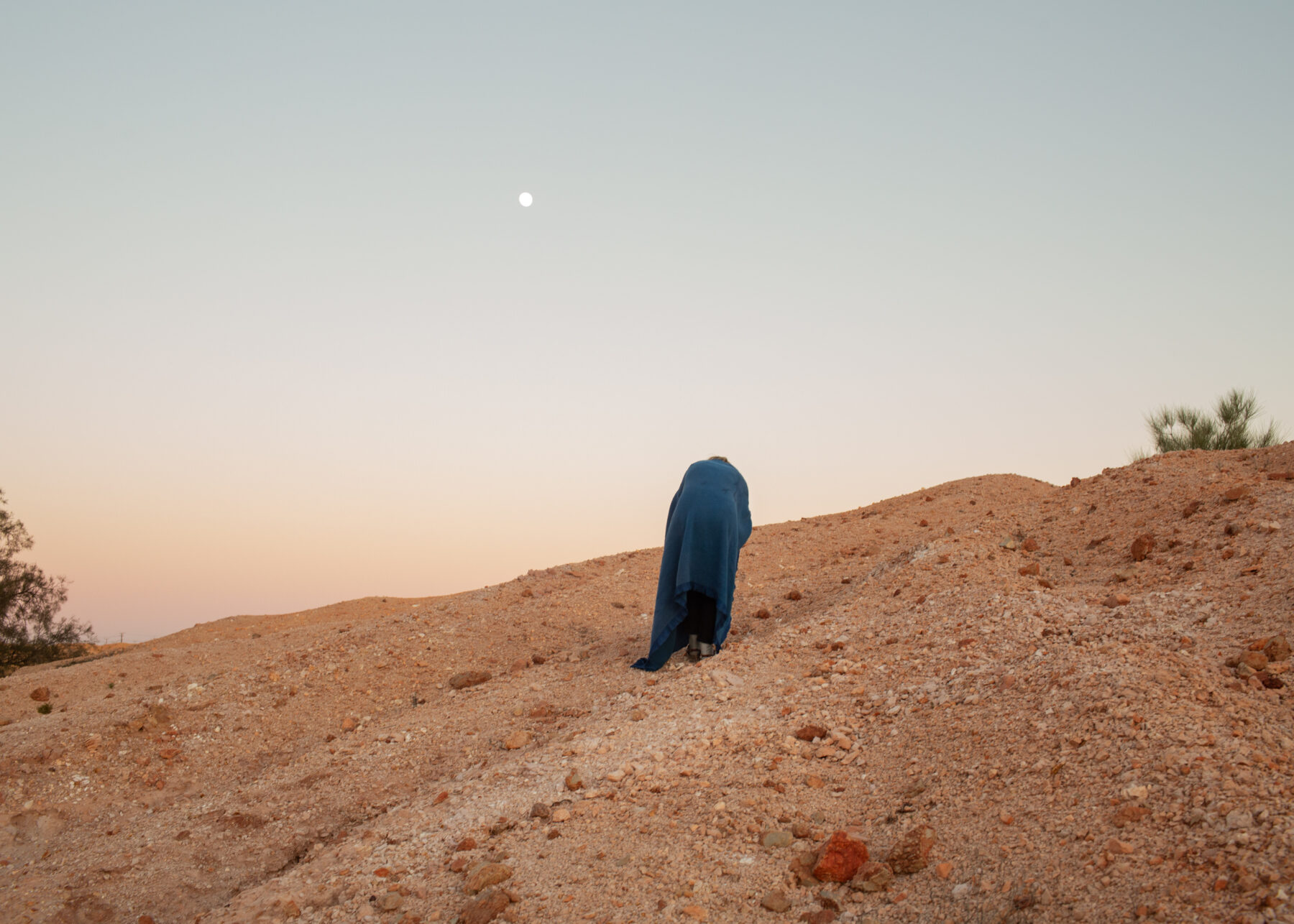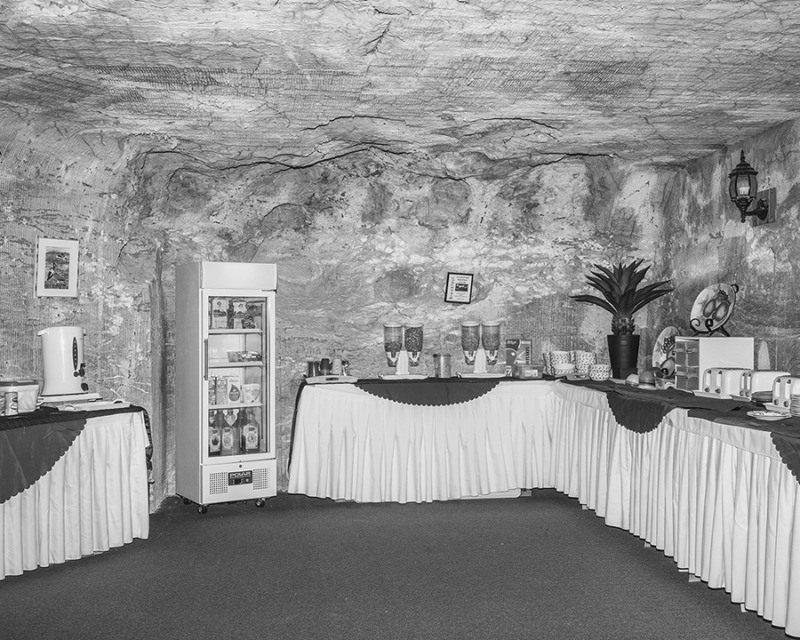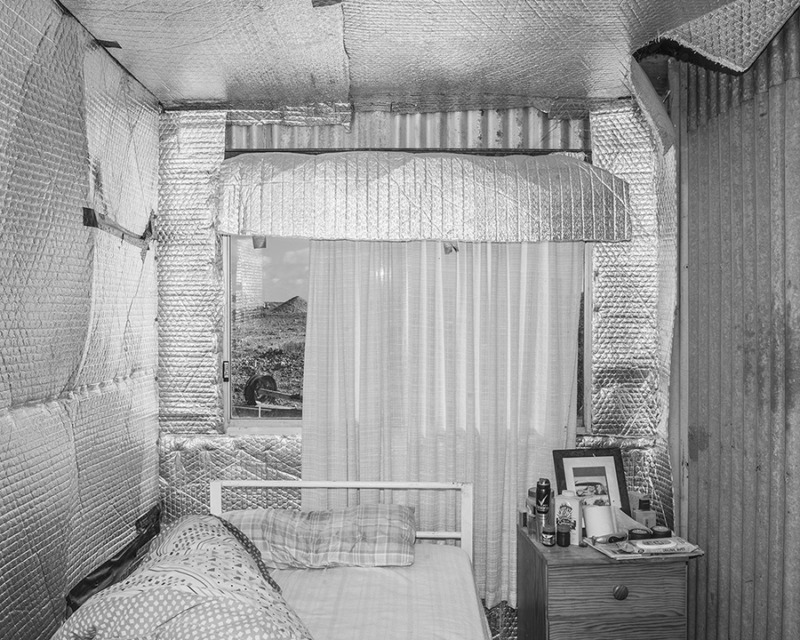I receive a large amount of pitches and story ideas, and at least once a year a photographer will ask if we can assign them to document Coober Pedy, a remote mining outpost 800 km north of Adelaide in South Australia that at one time produced 70 per cent of the world’s opal.
It’s obvious why the town has captured the attention and inspired so many visual people, including great film makers such as Wim Wenders and Werner Herzog. Coober Pedy is a deeply strange and surreal place with a vast manufactured moonscape concealing a cosmopolitan subterranean universe below. The place is a true frontier town, yet with a melting pot of culture akin to the diversity of a large city.
The town is seared into our folklore as a place of dreams, ambition and greed, and of fortunes lost and found, where people come to disappear and start their lives again. From the surface, Coober Pedy looks a ghost town, an eerie patchwork of cone-shaped mounds, embellished in parts by little collections of derelict machinery telling the story of the decline of the prospector and the creep of industrial mining, all set in a lonely and vast lunar-like landscape. Writer DBC Pierre wrote that Coober Pedy has “a theme park vibe… [and is] a dreamer’s place in the middle of nowhere… with a camaraderie peculiar to outposts”.
The whole town thrills with an absurdity and defiance of the environmental extremes. Golf is played at night with glowing balls on a grassless course. There’s an underground Serbian Orthodox church, hotel and campsite. A complex warren of doorways, air vents and chimneys poke out of the ground and are cut into knobs and hills, looking as if, Australian Geographic writer Bruce Elder reflects, “the whole place was inhabited by five-foot-high rabbits walking about on their hind legs”.
I put together a list of the many photographers who have already done photo stories on Coober Pedy, partly to support my feedback when passing on photo essay pitches that were straightforward portraits of the town. General surveys of places are rarely enough of a story as we need a twist or alternate view on what has been captured before to move the narrative on. Some photographers returned over and over again, obsessed as if they were struck by a kind of ‘opal fever’ themselves, a hypnotic condition that photojournalist Dean Sewell says “anchored fortune hunters to these desolate places for life”.
Dean has been drawn back to Coober Pedy many times “enthralled by the prevailing lawnessness, a darker undercurrent… with people on the run from someone or something, either a jilted wife, business partners where dealings went awry or the government – and include survivalists, fortune hunters, grifters or alternative lifestyle seekers”.
Dean’s Oculi Collective colleague, photographer Abigail Varney, spent four years documenting the town after an initial visit to capture the dugout interiors grew into a whole book project.
For Chilean photographer Tamara Merino, who only chanced upon the town in 2015 by accident after a flat tyre, Coober Pedy sparked her global photo series ‘Underland’ on the theme of underground living around the world.
French photographer Antoine Bruy won an array of international prizes for his unique vision of the mining settlement.
Italian photographer Mattia Panunzio wondered how he would meet locals to document their hopes and struggled when the town’s residents were hidden down mines or dugouts, but found himself embraced by members of the large Italian community.
Tamara Merino ‘Underland’
Chilean Photographer Tamara Merino lived underground in miner’s subterranean homes for more than a month forging friendships within the closed community. One of the few female miners, a German woman called Gaby, invited Tamara (who had her German background in common) to stay as long as she wanted. Participating in the community Tamara was able to intimately witness the private lives of people hidden underground.
See the rest of Tamara’s ‘Underland’ series exploring underground and cave-dwelling communities around the world, here.
Abigail Varney ‘Rough & Cut’
Australian photographer Abigail Varney’s dreamy Coober Pedy project ‘Rough & Cut’ took her four years, unpicking the layers of the town, way past the initial drawcard of the dugouts.
Abigail says the town “had such a strong sense of atmosphere, of awe, something I’d never experienced, having grown up in Melbourne. The light, the colours spoke so clearly to the extremities of the place. The unexpectedness [of Coober Pedy] was a big one for me. That element of surprise around every corner, it was a sprawling sculpture park at times – full of personality and creativity. I realise I was mostly drawn to the quirkiness and idiosyncrasies of the place, I understand also that my presence there kept things light and playful. There are undertones to a more unsettling part of Coober, that people go there to escape, to disappear. You can’t not feel this, I tend to touch on this feeling subtly throughout the work. But never pulling so far in that direction”.
Abigail Varney’s book ‘Rough & Cut’ is available from Perimeter Books.
Antoine Bruy ‘The White Man’s Hole’
French photographer Antoine Bruy visited Coober Pedy in 2016 as part of his yearlong odyssey across Australia. His survey of Coober Pedy, called ‘The White Man’s Hole’ , a reference to the commonly assumed indigenous name for the town, is the second chapter of his project ‘Outback Mythologies’.
The strangeness of Coober Pedy’s lunar-like landscapes, the horror of the man-made waste and dereliction, and the dystopian atmosphere is compounded by Antione’s abstract hard flat style and his choice to use black and white photography that strips out the intense colours, the red sands and dense blue skies that we associate with the Australian outback.
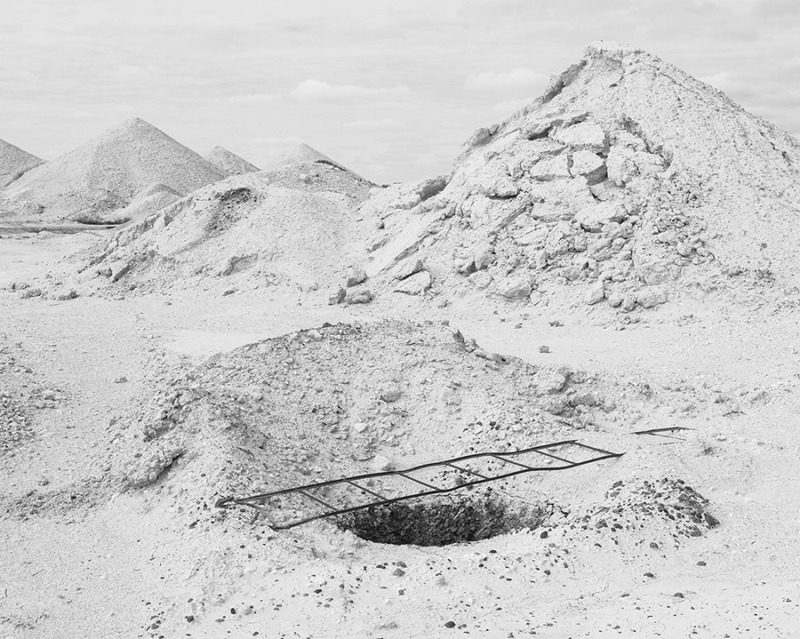

Mattia Panunzio ‘There’s a lot to see if you look’
Italian photographer Mattia Panunzio visited Coober Pedy in July 2022 as part of a larger ecological interest in mining sites around Australia. There he was surprised and delighted by the large community of Italian miners, some of whom hosted him in their dugouts, showing him their treasures, and making pizza together.

Mattia reflects “It might be hard for people who never moved overseas to understand this, but what finding an Italian club in the middle of the South Australian desert meant to me is absolutely indescribable. When I first walked in, I was amazed and surprised by the number of objects, signs, flags and stickers that reminded me of home. It was like being in an Italian osteria, 16 000 kilometres away from Italy”.
For the rest of Mattia’s series ‘There is a lot to see if you look’ and other projects of his, including a beautifully seen survey of mining sites head here and instagram.

